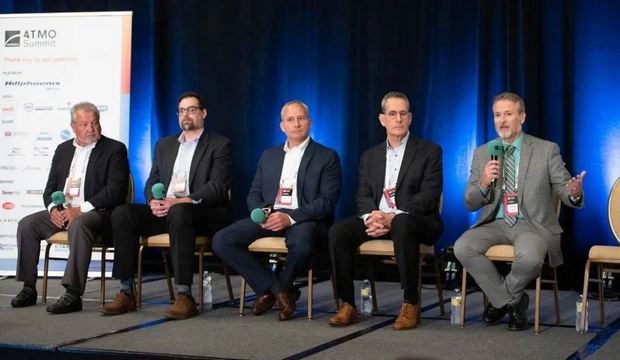Manufacturers See Robust Future for CO2 Refrigeration Market in North America

Leading manufacturers of CO2 (R744) refrigeration systems see robust growth in the adoption of transcritical CO2 refrigeration systems for commercial and industrial applications in North America.
But they emphasize the importance of clear regulation, training, innovative products and awareness-raising for the North American CO2 refrigeration market to continue to grow.
They delivered their remarks during the market trends panel at the ATMOsphere (ATMO) America Summit 2022 on natural refrigerants.
Growth in demand for CO2 systems
Based in Conyers, Georgia (U.S.), OEM Hillphoenix has seen a positive growth trend in CO2 for refrigeration over the years and expects for this trend to continue. To date, Hillphoenix has installed around 800 transcritical CO2 booster systems in the U.S. The manufacturer offers a wide variety of products to meet the growing demand for CO2-based systems.
Arneg, an Italian OEM, has installed over 1,000 CO2 systems globally, with some 50 systems in the Americas (though not in the U.S.). In addition to expanding its market and production to meet growing demand, the company is looking into other strategies to boost its offerings, like integrating self-contained propane (R290) cases.
OEM Kysor Warren Eptahas nearly 100 CO2 installation in North America, with another 200 installations coming soon. For Kysor Warren, future work is all about supporting the market’s adoption of natural refrigerants, including its new CO2 condensing unit, which is due in the U.S. by the end of this year.
Patenaude of component manufacturer Emerson is attributing the growth in demand for CO2 to a number of factors, including corporate interest in the net-zero movement, compliance with regulations and changes in consumer shopping behavior.
Clear regulatory guidelines
According to the panel, clear regulatory guidelines from the U.S. Environmental Protection Agency (EPA) are needed to support the market’s transition to natural refrigerants like CO2.
Training and upskilling for the future
A challenge highlighted by a number of the panelists is that of ensuring there are enough trained engineers and technicians to meet the growing demand for CO2 refrigeration systems.
To ensure the manpower and support is there, Hillphoenix has developed a learning center, which offers training courses and covers system installation and start up, as well as maintenance and troubleshooting. The manufacturer has also created an ECO2 Center of Excellence to support every element of the CO2 value chain, from engineering, design and manufacturing to delivery, installation and servicing.
Attracting talent to the HVAC&R industry was also acknowledged as a challenge that needs to be overcome. Discussion centered around promoting trade schools to high school and college students with a focus on the long-term opportunities that the industry can offer as companies enhance their sustainability goals and transition to natural refrigerants.
Raising awareness of CO2
Despite its growing popularity, there remains some confusion surrounding CO2 as a refrigerant, according to many of the panelists. To combat this, awareness-raising and education is key.
Innovation to support a changing landscape
As CO2 becomes more popular as a refrigerant, it’s important that manufacturers offer customers a wider variety of product options, the panelists said.
